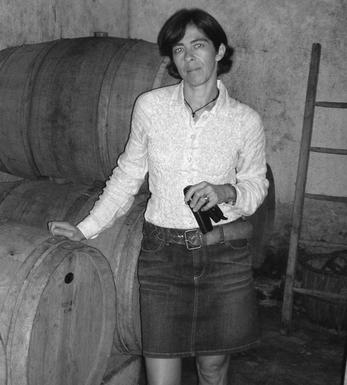
About this WINE

Domaine Des Saumades
Four generations of Moussets have been winemakers in Châteauneuf-du-Pape. However, in 1995, Frank Mousset, whose day job is at another winery with his brother-in-law, was approached to buy a 2.5-hectare parcel in the Pignan lieu-dit, beside Château Rayas. Franck and wife Murielle, then opened Domaine des Saumades, only making wine here.
The sandy soils here are perfect for Grenache. Franck also had the foresight to plant Mourvèdre here around six years ago. He believes Mourvèdre is key to countering the effects of climate change on Châteauneuf-du-Pape’s wines. Adding freshness, balance and Franck says, getting better annually in this parcel (currently, converting to organic certification). Since 2019 he has added 10% Mourvèdre into his otherwise pure Grenache red wine. The wines were very good but, with Mourvèdre, they are stunning. The white, typically 50% Grenache Blanc, 25% Clairette and 25% Bourboulenc, displays myriad flavours from fresh citrus to warming vanilla. This is what Châteauneuf-du-Pape is all about.

Châteauneuf-du-Pape
The most celebrated village of the Southern Rhône, Châteauneuf-du-Pape is the birthplace of the now indispensable French Appellation d’Origine Contrôlée system – imperfect though it may be. Compared to the Northern Rhône, the vineyards here are relatively flat and often feature the iconic galet pebbles – the precise benefits of which are a source of much debate. Minimum alcohol levels required by the AOC are the highest in France, but at 12.5% it is well below the natural generosity of Grenache, which only achieves its full aromatic potential when it is fully ripe and laden with the resultant high sugars. Syrah and Mourvèdre contribute the other defining elements in the blend, adding pepper, savoury spice and structure to the decadent Grenache. There are a further 10 permitted red grape varieties which can be used to adjust the “seasoning”. Of the five white varieties permitted, it is Grenache Noir’s sibling – predictably perhaps – Grenache Blanc, which dominates, though Roussanne shows a great deal of promise when handled well, notably at Château de Beaucastel.

Southern Rhône Blend
The vast majority of wines from the Southern Rhône are blends. There are 5 main black varieties, although others are used and the most famous wine of the region, Châteauneuf du Pape, can be made from as many as 13 different varieties. Grenache is the most important grape in the southern Rhône - it contributes alcohol, warmth and gentle juicy fruit and is an ideal base wine in the blend. Plantings of Syrah in the southern Rhône have risen dramatically in the last decade and it is an increasingly important component in blends. It rarely attains the heights that it does in the North but adds colour, backbone, tannins and soft ripe fruit to the blend.
The much-maligned Carignan has been on the retreat recently but is still included in many blends - the best old vines can add colour, body and spicy fruits. Cinsault is also backtracking but, if yields are restricted, can produce moderately well-coloured wines adding pleasant-light fruit to red and rosé blends. Finally, Mourvèdre, a grape from Bandol on the Mediterranean coast, has recently become an increasingly significant component of Southern Rhône blends - it often struggles to ripen fully but can add acidity, ripe spicy berry fruits and hints of tobacco to blends.



Buying options
Add to wishlist
Description
Franck decided to add all the stems in 2013, but to keep the cuvaison reasonably short and to divide the élevage between barriques and cuves. Yields for this monocépage wine were, unsurprisingly, small, and the combination of the resulting concentration with the somewhat unusual (for this property at least) winemaking employed, has resulted in a wine of finesse, poise and an undeniable charm.
Simon Field MW - Rhône Buyer
The Mousset family, rather like the Perrins or the Sabons, seem to dominate the landscape of the Southern Rhône, be it through the ownership of the distinctive Domaine des Fines Roches hotel, or the ownership of one of the largest estates in the valley-Clos St Michel, or one of the smallest- Domaine des Saumades. With Château Rayas as one’s immediate neighbour, even 2.5 hectares can go a long way.
wine at a glance
Delivery and quality guarantee